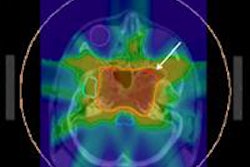The combination of functional resection laser surgery and intensity-modulated radiotherapy (IMRT) treatment is more effective at extending the lives of patients with advanced head and neck cancers than having only radiotherapy treatment, according to a study presented at the recent RSNA 2011 conference in Chicago.
Both therapies have been well established as sole treatments for head and neck cancers. To determine if both treatments combined would be more effective, a team of German researchers from Südharz Hospital Nordhausen analyzed the outcomes of 191 of their patients treated between 2001 and 2009. Twenty-six patients, ranging in age from 29 to 92 years, had stage III and 165 patients had stage IV head and neck cancers.
A total of 28 patients were treated for laryngeal cancer, three-fourths of whom received the combined therapies. The remaining 163 patients received treatment for other head and neck cancers, with 76% receiving the combined treatment.
Functional resection laser surgery offered the advantages of preserving more anatomical structures, taking a shorter amount of time to perform, and lowering risks to patients, according to presenter Dr. Jens Buentzel of the university's department of otolaryngology.
IMRT was used so that organs such as the brain, salivary glands, larynx, and vertebral column could be preserved. Patients received daily fractional treatments of 1.8 Gy, for a total dose of 61.2 Gy for the primary tumor and the N+ neck region and a total dose of 50.4 Gy for the N0 neck region. The median time between surgery and radiotherapy treatment was four weeks.
As part of their analysis, the researchers used data from the tumor registry of the state Thuringia, analyzing only IMRT patients without simultaneous chemotherapy. Patients with laryngeal cancer were separated from other head and neck cancers due to prognostic differences.
Patients were followed for a minimum of 18 months up to 12 years after treatment. Patients with laryngeal cancer who received the combined treatment had a survival rate of 56% at three years, compared with 34% for patients who received only IMRT treatment. Patients with combined therapy also had better survival at five years following treatment (47% versus 34%) and at 10 years following treatment (37% versus 17%). Patients who had the combined treatment lived a median of 3.9 years, compared with 1.6 years for those who had only IMRT.
Patients with other head and neck cancers who had the combined treatment also lived longer: 46% survived three years after treatment, compared with 29%. They also lived more than twice as long, a median of two and a half years, compared with less than a year.
Both groups experienced a similar level of acute toxicities, none of which was higher than stage III. This was very encouraging because the majority of patients were old and had more comorbidities than other cancer patients, Buentzel said. He and his colleagues are currently conducting an evaluation of late toxicities.



















